Comet Catalina Emerges : Comet Catalina Is Ready For Its Close-up. The Giant Snowball From The Outer
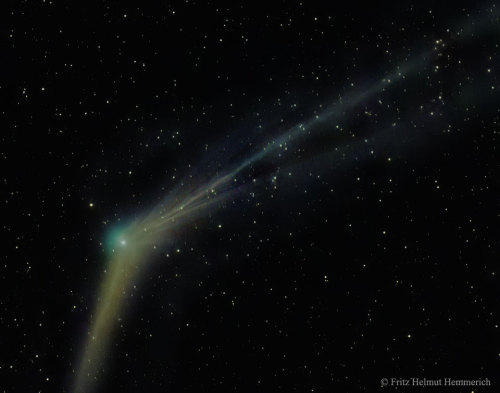
Comet Catalina Emerges : Comet Catalina is ready for its close-up. The giant snowball from the outer Solar System, known formally as C/2013 US10 tails, making it an impressive object for binoculars and long-exposure cameras. The featured image was taken last week from the Canary Islands, off the northwest coast of Africa. Sky enthusiasts around the world will surely be tracking the comet over the next few months to see how it evolves. via NASA
js
More Posts from Littlecadet-biguniverse and Others



Messier 1 - The Crab Nebula
Potentially Humanity’s First Historically Observed Supernova
The Crab Nebula is the first astronomical object identified with a historical supernova explosion. Around in the year 1054, Chinese astronomers identified a large bright object that suddenly and mysteriously appeared in the sky. The explosion was so bright that it was even visible during the day time.
700 years later the super nova remnant faded in brightness as it expanded and was nearly forgotten. The Super Nova Remnant was rediscovered in 1758 ( officially re-recorded) by Charles Messier while he was creating a catalog of mysterious objects that looked like comets but were not.
We now know that the beautiful Crab Nebula is the magnificent result of the death of a star, which was unknown to Charles Messier and the Chinese Astronomers that discovered the Object. Now, thanks to space telescopes such as Hubble and Chandra, we can image the Nebula in great detail. The bottom left image is of a small region of the Crab Nebula. It shows “Rayleigh–Taylor instabilities in its intricate filamentary structure” and gives scientists a better understanding of the death of stars. The image to the bottom left shows combined visible light data from Hubble and x-ray data from Chandra.
Credit: NASA/Hubble/Chandra
'Enterprise' Nebulae Seen by Spitzer
NASA - Spitzer Space Telescope patch. Sept. 8, 2016
Image above: These nebulae seen by NASA’s Spitzer Space Telescope, at left, may resemble two versions of the starship Enterprise from “Star Trek,” overlaid at right. Image Credits: NASA/JPL-Caltech. Just in time for the 50th anniversary of the TV series “Star Trek,” which first aired September 8th,1966, a new infrared image from NASA’s Spitzer Space Telescope may remind fans of the historic show. Since ancient times, people have imagined familiar objects when gazing at the heavens. There are many examples of this phenomenon, known as pareidolia, including the constellations and the well-known nebulae named Ant, Stingray and Hourglass. On the right of the image, with a little scrutiny, you may see hints of the saucer and hull of the original USS Enterprise, captained by James T. Kirk, as if it were emerging from a dark nebula. To the left, its “Next Generation” successor, Jean-Luc Picard’s Enterprise-D, flies off in the opposite direction. Astronomically speaking, the region pictured in the image falls within the disk of our Milky Way galaxy and displays two regions of star formation hidden behind a haze of dust when viewed in visible light. Spitzer’s ability to peer deeper into dust clouds has revealed a myriad of stellar birthplaces like these, which are officially known only by their catalog numbers, IRAS 19340+2016 and IRAS19343+2026. Trekkies, however, may prefer using the more familiar designations NCC-1701 and NCC-1701-D. Fifty years after its inception, Star Trek still inspires fans and astronomers alike to boldly explore where no one has gone before.
Spitzer Space Telescope. Image Credits: NASA/JPL-Caltech
This image was assembled using data from Spitzer’s biggest surveys of the Milky Way, called GLIMPSE and MIPSGAL. Light with a wavelength of 3.5 microns is shown in blue, 8.0 microns in green, and 24 microns in red. The green colors highlight organic molecules in the dust clouds, illuminated by starlight. Red colors are related to thermal radiation emitted from the very hottest areas of dust. JPL manages the Spitzer Space Telescope mission for NASA’s Science Mission Directorate, Washington. Science operations are conducted at the Spitzer Science Center at Caltech in Pasadena, California. Spacecraft operations are based at Lockheed Martin Space Systems Company, Littleton, Colorado. Data are archived at the Infrared Science Archive housed at the Infrared Processing and Analysis Center at Caltech. Caltech manages JPL for NASA. For more information about Spitzer, visit: http://spitzer.caltech.edu http://www.nasa.gov/spitzer Images (mentioned), Text, Credits: NASA/Tony Greicius/JPL/Elizabeth Landau/Written by Robert Hurt, NASA’s Spitzer Science Center. Greetings, Orbiter.ch Full article
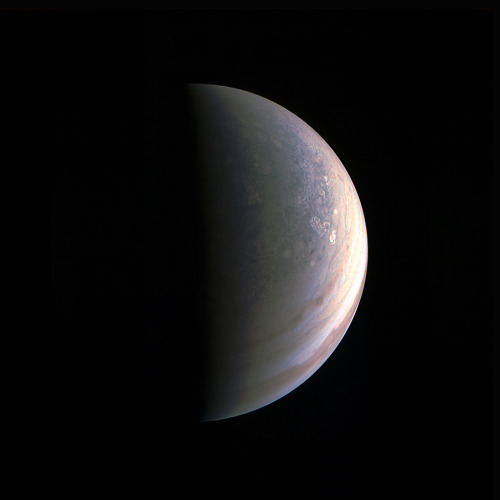
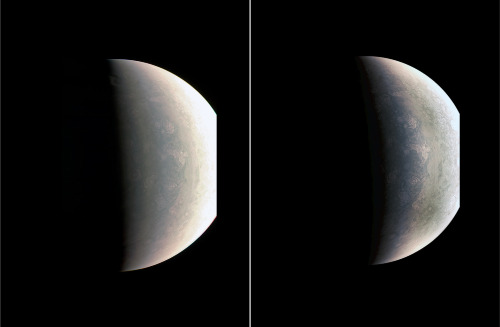
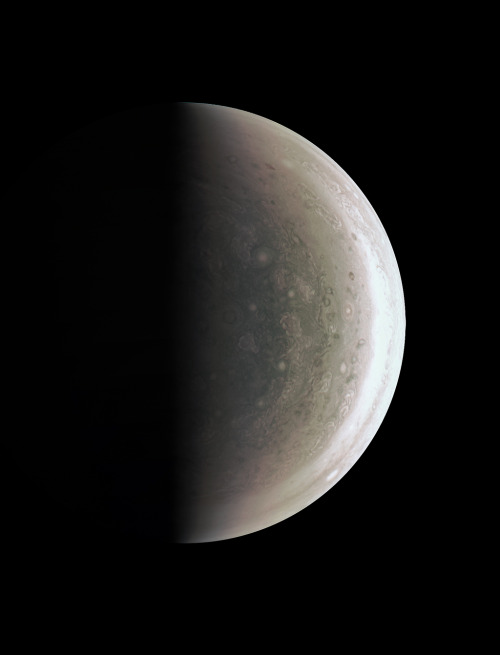
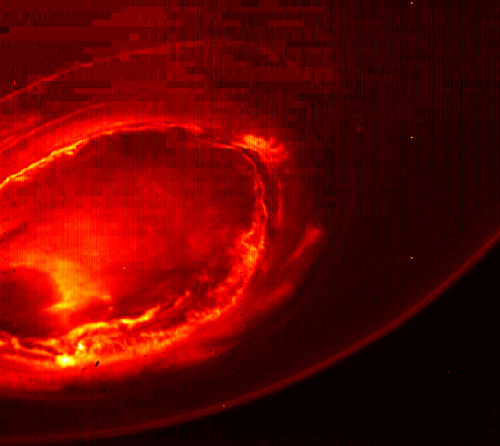
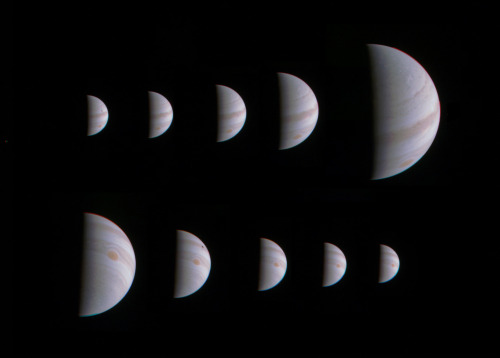
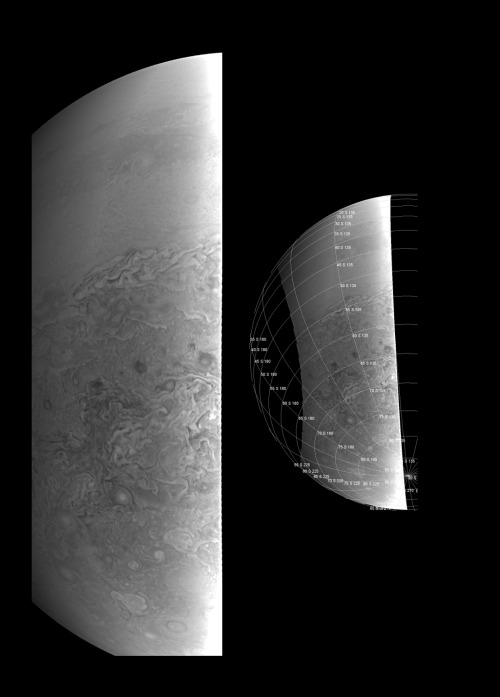
Jupiter’s North Pole Unlike Anything Encountered in Solar System
NASA’s Juno spacecraft has sent back the first-ever images of Jupiter’s north pole, taken during the spacecraft’s first flyby of the planet with its instruments switched on. The images show storm systems and weather activity unlike anything previously seen on any of our solar system’s gas-giant planets.
Juno successfully executed the first of 36 orbital flybys on Aug. 27 when the spacecraft came about 2,500 miles (4,200 kilometers) above Jupiter’s swirling clouds. The download of six megabytes of data collected during the six-hour transit, from above Jupiter’s north pole to below its south pole, took one-and-a-half days. While analysis of this first data collection is ongoing, some unique discoveries have already made themselves visible.
“First glimpse of Jupiter’s north pole, and it looks like nothing we have seen or imagined before,” said Scott Bolton, principal investigator of Juno from the Southwest Research Institute in San Antonio. “It’s bluer in color up there than other parts of the planet, and there are a lot of storms. There is no sign of the latitudinal bands or zone and belts that we are used to – this image is hardly recognizable as Jupiter. We’re seeing signs that the clouds have shadows, possibly indicating that the clouds are at a higher altitude than other features.”
One of the most notable findings of these first-ever pictures of Jupiter’s north and south poles is something that the JunoCam imager did not see.
“Saturn has a hexagon at the north pole,” said Bolton. “There is nothing on Jupiter that anywhere near resembles that. The largest planet in our solar system is truly unique. We have 36 more flybys to study just how unique it really is.”
Along with JunoCam snapping pictures during the flyby, all eight of Juno’s science instruments were energized and collecting data. The Jovian Infrared Auroral Mapper (JI-RAM), supplied by the Italian Space Agency, acquired some remarkable images of Jupiter at its north and south polar regions in infrared wavelengths.
“JIRAM is getting under Jupiter’s skin, giving us our first infrared close-ups of the planet,” said Alberto Adriani, JIRAM co-investigator from Istituto di Astrofisica e Planetologia Spaziali, Rome. “These first infrared views of Jupiter’s north and south poles are revealing warm and hot spots that have never been seen before. And while we knew that the first ever infrared views of Jupiter’s south pole could reveal the planet’s southern aurora, we were amazed to see it for the first time. No other instruments, both from Earth or space, have been able to see the southern aurora. Now, with JIRAM, we see that it appears to be very bright and well structured. The high level of detail in the images will tell us more about the aurora’s morphology and dynamics.”
Among the more unique data sets collected by Juno during its first scientific sweep by Jupiter was that acquired by the mission’s Radio/Plasma Wave Experiment (Waves), which recorded ghostly- sounding transmissions emanating from above the planet. These radio emissions from Jupiter have been known about since the 1950s but had never been analyzed from such a close vantage point.
“Jupiter is talking to us in a way only gas-giant worlds can,” said Bill Kurth, co-investigator for the Waves instrument from the University of Iowa, Iowa City. “Waves detected the signature emissions of the energetic particles that generate the massive auroras which encircle Jupiter’s north pole. These emissions are the strongest in the solar system. Now we are going to try to figure out where the electrons come from that are generating them.”
The Juno spacecraft launched on Aug. 5, 2011, from Cape Canaveral, Florida and arrived at Jupiter on July 4, 2016. JPL manages the Juno mission for the principal investigator, Scott Bolton, of Southwest Research Institute in San Antonio. Juno is part of NASA’s New Frontiers Program, which is managed at NASA’s Marshall Space Flight Center in Huntsville, Alabama, for NASA’s Science Mission Directorate. Lockheed Martin Space Systems, Denver, built the spacecraft. Caltech in Pasadena, California, manages JPL for NASA.
IMAGE 1….As NASA’s Juno spacecraft closed in on Jupiter for its Aug. 27, 2016 pass, its view grew sharper and fine details in the north polar region became increasingly visible. The JunoCam instrument obtained this view on August 27, about two hours before closest approach, when the spacecraft was 120,000 miles (195,000 kilometers) away from the giant planet (i.e., for Jupiter’s center). Unlike the equatorial region’s familiar structure of belts and zones, the poles are mottled with rotating storms of various sizes, similar to giant versions of terrestrial hurricanes. Jupiter’s poles have not been seen from this perspective since the Pioneer 11 spacecraft flew by the planet in 1974.
IMAGE 2….Storm systems and weather activity unlike anything encountered in the solar system are on view in these color images of Jupiter’s north polar region from NASA’s Juno spacecraft. Two versions of the image have been contrast-enhanced differently to bring out detail near the dark terminator and near the bright limb. The JunoCam instrument took the images to create this color view on August 27, when the spacecraft was about 48,000 miles (78,000 kilometers) above the polar cloud tops. A wavy boundary is visible halfway between the grayish region at left (closer to the pole and the nightside shadow) and the lighter-colored area on the right. The wavy appearance of the boundary represents a Rossby wave – a north-south meandering of a predominantly east-west flow in an atmospheric jet. This may be caused by a difference in temperature between air to the north and south of this boundary, as is often the case with such waves in Earth’s atmosphere. The polar region is filled with a variety of discrete atmospheric features. Some of these are ovals, but the larger and brighter features have a “pinwheel” shape reminiscent of the shape of terrestrial hurricanes. Tracking the motion and evolution of these features across multiple orbits will provide clues about the dynamics of the Jovian atmosphere. This image also provides the first example of cloud shadowing on Jupiter: near the top of the image, a high cloud feature is seen past the normal boundary between day and night, illuminated above the cloud deck below. While subtle color differences are visible in the image, some of these are likely the result of scattered light within the JunoCam optics. Work is ongoing to characterize these effects.
IMAGE 3….This image from NASA’s Juno spacecraft provides a never-before-seen perspective on Jupiter’s south pole. The JunoCam instrument acquired the view on August 27, 2016, when the spacecraft was about 58,700 miles (94,500 kilometers) above the polar region. At this point, the spacecraft was about an hour past its closest approach, and fine detail in the south polar region is clearly resolved. Unlike the equatorial region’s familiar structure of belts and zones, the poles are mottled by clockwise and counterclockwise rotating storms of various sizes, similar to giant versions of terrestrial hurricanes. The south pole has never been seen from this viewpoint, although the Cassini spacecraft was able to observe most of the polar region at highly oblique angles as it flew past Jupiter on its way to Saturn in 2000
IMAGE 4….This infrared image gives an unprecedented view of the southern aurora of Jupiter, as captured by NASA’s Juno spacecraft on August 27, 2016. The planet’s southern aurora can hardly be seen from Earth due to our home planet’s position in respect to Jupiter’s south pole. Juno’s unique polar orbit provides the first opportunity to observe this region of the gas-giant planet in detail. Juno’s Jovian Infrared Auroral Mapper (JIRAM) camera acquired the view at wavelengths ranging from 3.3 to 3.6 microns – the wavelengths of light emitted by excited hydrogen ions in the polar regions. The view is a mosaic of three images taken just minutes apart from each other, about four hours after the perijove pass while the spacecraft was moving away from Jupiter.
IMAGE 5….This montage of 10 JunoCam images shows Jupiter growing and shrinking in apparent size before and after NASA’s Juno spacecraft made its closest approach on August 27, 2016, at 12:50 UTC. The images are spaced about 10 hours apart, one Jupiter day, so the Great Red Spot is always in roughly the same place. The small black spots visible on the planet in some of the images are shadows of the large Galilean moons. The images in the top row were taken during the inbound leg of the orbit, beginning on August 25 at 13:15 UTC when Juno was 1.4 million miles (2.3 million kilometers) away from Jupiter, and continuing to August 27 at 04:45 UTC when the spacecraft was 430,000 miles (700,000 kilometers) away. The images in the bottom row were obtained during the outbound leg of the orbit. They begin on August 28 at 00:45 UTC when Juno was 750,000 miles (920,000 kilometers) away and continue to August 29 at 16:45 UTC when the spacecraft was 1.6 million miles (2.5 million kilometers) away.
IMAGE 6….This image provides a close-up view of Jupiter’s southern hemisphere, as seen by NASA’s Juno spacecraft on August 27, 2016. The JunoCam instrument captured this image with its red spectral filter when the spacecraft was about 23,600 miles (38,000 kilometers) above the cloud tops. The image covers an area from close to the south pole to 20 degrees south of the equator, centered on a longitude at about 140 degrees west. The transition between the banded structures near the equator and the more chaotic polar region (south of about 65 degrees south latitude) can be clearly seen. The smaller version at right of this image shows the same view with a latitude/longitude grid overlaid. This image has been processed to remove shading effects near the terminator – the dividing line between day and night – caused by Juno’s orbit.
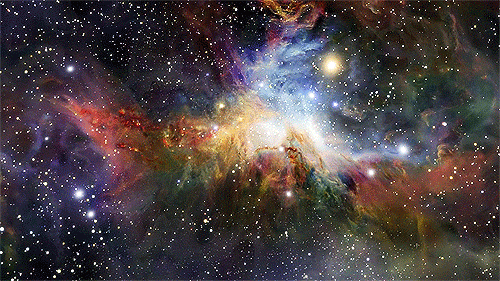
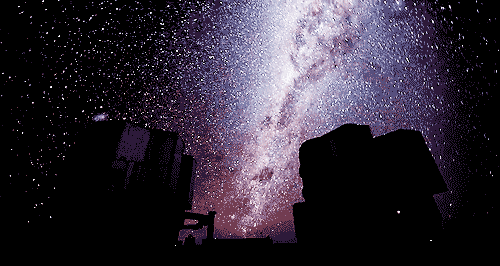
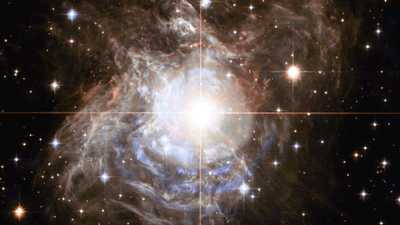
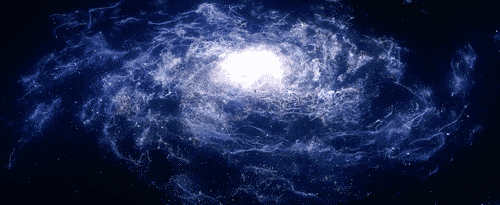
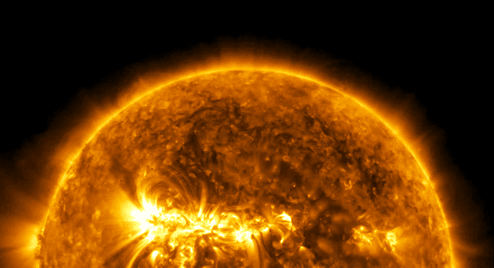
“Every one of us is, in the cosmic perspective, precious. If a human disagrees with you, let them live. In a hundred billion galaxies, you will not find another.” ~ Carl Sagan, Cosmos
Do telescopes actually take colorful photographs or are the pretty colorful photographs of galaxies that we know colored afterwards? If a human was floating through space, would space look colorful to them?
So some pictures are taken in different wavelengths to see different characteristics. (infrared wavelengths to see through thick gas and dust, xray wavelengths to see highly energized regions)
But, in the visible wavelengths you are seeing the colors. They’re just enhanced brighter than they might be.
For example, I took this picture of “the California Nebula” using a camera (Canon 60Da) attached to a telescope. This shows one exposure, and the background is red due to effects of the camera (which you subtract):

You take multiple exposures, combine them, subtract the background effects & adjust the color a little and get this…


Solar filaments a.k.a. prominences – when observed at the solar limb (above), are long clouds of partially ionized plasma suspended above the Sun’s surface by strongly sheared magnetic structures, called filament channels, that can support the dense plasma against solar gravity. Filaments may form at various locations on the Sun, however, they are always found within preexisting filament channels above polarity inversion lines which separate areas of opposite magnetic polarity regions.
Credit: NASA/SDO/LMSAL

The most color rich region of night sky, the Milky Way Core and Rho Ophiuchi Complex
js
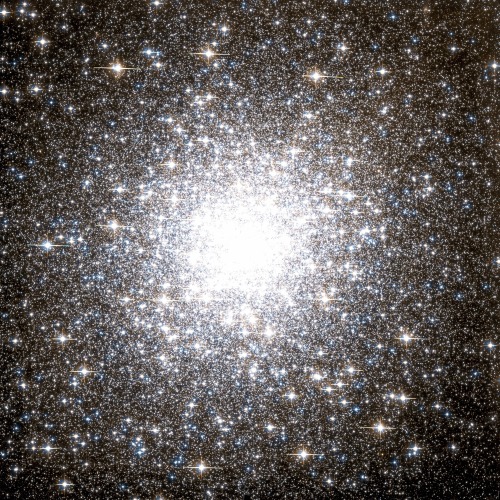
150,000 Stars - The Messier 2 Star Cluster
This massive Star Cluster (The Messier 2 Star Cluster) is 13 billion years old - making it one of the oldest star clusters in the Milky Way Galaxy. Not only is this Star Cluster ancient, it is one of the largest known star clusters. On a clear night away from light pollution, you can see M2 with the naked eye as a faint blur in the constellation Aquarius.
Credit: NASA/Hubble/SIMBAD Astronomy db
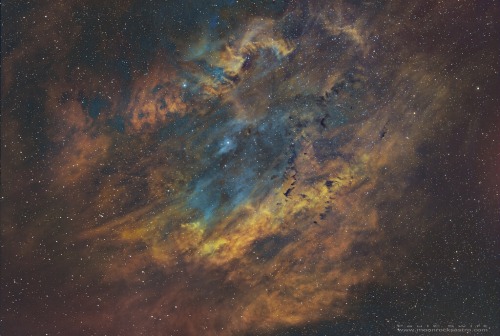
Sh2-119 Sharpless 119,emission nebular in Narrowband by Paul C. Swift on Flickr.
-
 sunatdusk liked this · 6 years ago
sunatdusk liked this · 6 years ago -
 rxven9skx liked this · 6 years ago
rxven9skx liked this · 6 years ago -
 16fahri liked this · 6 years ago
16fahri liked this · 6 years ago -
 mcain1813 liked this · 6 years ago
mcain1813 liked this · 6 years ago -
 fangirlsencyclopaediaofweirdness liked this · 6 years ago
fangirlsencyclopaediaofweirdness liked this · 6 years ago -
 moonknightisabossassbitch-blog liked this · 6 years ago
moonknightisabossassbitch-blog liked this · 6 years ago -
 trues22 liked this · 6 years ago
trues22 liked this · 6 years ago -
 n09m19changsblog liked this · 6 years ago
n09m19changsblog liked this · 6 years ago -
 kucukbirvedabusesi liked this · 6 years ago
kucukbirvedabusesi liked this · 6 years ago -
 lumosnite liked this · 6 years ago
lumosnite liked this · 6 years ago -
 fagdykefrank liked this · 6 years ago
fagdykefrank liked this · 6 years ago -
 cumberbees reblogged this · 6 years ago
cumberbees reblogged this · 6 years ago -
 cumberbees liked this · 6 years ago
cumberbees liked this · 6 years ago -
 pika-plushie liked this · 6 years ago
pika-plushie liked this · 6 years ago -
 welovingcollectortyphoon reblogged this · 6 years ago
welovingcollectortyphoon reblogged this · 6 years ago -
 welovingcollectortyphoon liked this · 6 years ago
welovingcollectortyphoon liked this · 6 years ago -
 arkang3lsworld liked this · 6 years ago
arkang3lsworld liked this · 6 years ago -
 starsoflove liked this · 6 years ago
starsoflove liked this · 6 years ago -
 sharkspaceengine liked this · 6 years ago
sharkspaceengine liked this · 6 years ago -
 radiodogblog reblogged this · 6 years ago
radiodogblog reblogged this · 6 years ago -
 radiodogblog liked this · 6 years ago
radiodogblog liked this · 6 years ago -
 athena-2 liked this · 7 years ago
athena-2 liked this · 7 years ago -
 elacora reblogged this · 8 years ago
elacora reblogged this · 8 years ago -
 backupp liked this · 8 years ago
backupp liked this · 8 years ago -
 wheatbee reblogged this · 8 years ago
wheatbee reblogged this · 8 years ago -
 choice-spirit reblogged this · 8 years ago
choice-spirit reblogged this · 8 years ago -
 krissalus reblogged this · 8 years ago
krissalus reblogged this · 8 years ago -
 yujiro023-blog liked this · 8 years ago
yujiro023-blog liked this · 8 years ago -
 importantkryptonitemagazine liked this · 8 years ago
importantkryptonitemagazine liked this · 8 years ago -
 asterialsapphire reblogged this · 8 years ago
asterialsapphire reblogged this · 8 years ago -
 ayah-94-blog liked this · 8 years ago
ayah-94-blog liked this · 8 years ago -
 thedreadpirateratchet reblogged this · 8 years ago
thedreadpirateratchet reblogged this · 8 years ago -
 kitty---kitty reblogged this · 8 years ago
kitty---kitty reblogged this · 8 years ago -
 strawbunry reblogged this · 8 years ago
strawbunry reblogged this · 8 years ago -
 akasha6669leretour liked this · 8 years ago
akasha6669leretour liked this · 8 years ago
GREETINGS FROM EARTH! Welcome to my space blog! Let's explore the stars together!!!
144 posts